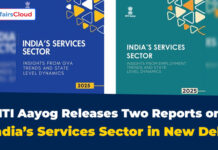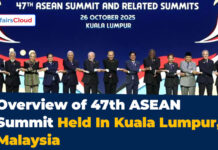
The World Bank (WB) has released the 4th edition of its Global Financial Inclusion Database/Report titled ‘The Global Findex Database 2021: Financial Inclusion, Digital Payments, and Resilience in the Age of COVID-19‘. As per it, India is among seven countries which home to half the world’s 1.4 billion adults without access to formal banking.
- Sub-Saharan Africa, young adults (ages 15–24) make up almost 40% of those without access to banking.
- India, China, Pakistan, and Indonesia together with Bangladesh, Egypt and Nigeria i.e. these 7 nations have 54% or 740 million people of the global unbanked population.
- People without an account at a financial institution or a mobile money service provider are classified as unbanked.
Who Prepared the Report?
The Global Findex 2021 database was prepared by the Finance and Private Sector Development team of the Development Research Group in the World Bank’s Development Economics Vice Presidency (DEC).
Assessment:
The WB surveyed about 125,000 adults in 123 economies to state how people accessed and used financial services during COVID-19, when mobility restrictions and health policies increased the demand for digital services.
- This edition also includes new series measuring financial health and resilience and contains more granular data on digital payments adoption.
Key Highlights from Report:
i.Large shares of the global population without formal banking lives in India (130 million) and China (230 million) because of their size. They are followed by Pakistan (115 million), and Indonesia (100 million).
iii.Globally, 64% of unbanked adults have primary education or less.
- In Sub-Saharan Africa, 74% of the unbanked have only primary education or less.
iv.Women are more likely to be unbanked than men as they are often excluded from formal banking services because they lack official forms of identification, do not own a mobile phone or other forms of technology and have lower financial capability.
Why 24% of Global Adults are unbanked?
The Global Findex 2021 also conducted a survey to find out why 24% of adults are unbanked globally. As per it, Lack of Money is one of the multiple reasons.
i.Worldwide, according to 36% of unbanked adults, financial services are too expensive.
- This share was almost twice as high (60%) in Latin America and the Caribbean.
ii.Distance Barrier: 31% of unbanked adults mark distance as a barrier to financial services.
- In some economies, the share was higher, with 53% of unbanked adults in Liberia where financial institutions were too far away.
- Other countries with a higher share of unbanked adults cited distance as a barrier were Bolivia (47%), India (43%) and Uganda (41%).
iii.Religion Barrier: 10% of the unbanked adults globally cited religion as a barrier. In Iraq this percentage is 24%, and in Morocco it is 19%.
iv.Identification Documents: The survey also noticed that mobile phone ownership and identification documents are significant barriers to mobile money accounts, especially for women in Sub-Saharan Africa.
- Larger gender gaps among the unbanked with no ID were observed in Benin, Cote d’Ivoire and Liberia.
v.Globally, 30% of unbanked adults said they do not have an account because a family member already has one.
POSITIVE ASPECTS
COVID-19 boosted the Adoption of Digital Financial Services in Developing Nations:
i.There are 40% of adults in developing economies excluding China who made a digital merchant payment using a card, phone, or the internet, and one-third of adults who paid a utility bill directly from an account, did so for the first time after the start of the pandemic.
- In China, 80 percent of adults made a digital merchant payment, whereas in other developing economies 20% of adults did so.
ii.Globally, Two-thirds of adults worldwide now make or receive a digital payment, with the share in developing economies growing from 35% in 2014 to 57% in 2021.
iii.As of 2021, 76% of adults globally now have an account at a bank, other financial institution, or with a mobile money provider, up from 68% in 2017 and 51% in 2011.
Account Ownership:
i.In 2021, The global account ownership has reached 76% of the worldwide population and 71% of people in developing countries.
- From 2017 to 2021, the average rate of account ownership in developing economies increased by 8 percentage points, from 63 percent of adults to 71 percent of adults.
- In developing economies, 40 percent of adults who paid utility bills (18 percent of adults ) did so directly from an account.
- Mobile money is driving growth in account ownership, particularly in Sub-Saharan Africa, where 33 percent of adults have a mobile money account.
ii.Among developing countries, 71% of people in developing countries have an account at a bank, other financial institution, or with a mobile money provider, up from 63% in 2017 and 42% in 2011.
iii.As per the survey, the percentage of account ownership increased by double digits in 34 countries since 2017.
iv.Over the last decade much of the growth related to the same was concentrated in India and China.
v.The gender gap in account ownership across developing economies has decreased to 6 percentage points from 9 percentage points.
- Notably, Brazil, China, Kenya, Russia and Thailand have relatively high account ownership rates, yet a majority of those still unbanked are women.
vi.Among low-income economies account ownership varies from 6 percent
in South Sudan to 66 percent in Uganda. Among high-income economies, Uruguay has the lowest account ownership rate at 74 percent, and 10 high-income economies have 100 percent account ownership.
- Thailand boasts the highest account ownership rate among upper-middle-income economies at 96 percent. And in lower middle-income economies, account ownership ranges from 21 percent in Pakistan to 98 percent in Mongolia.
Click Here for Official Report
About Global Findex Database:
Since 2011, it has been published every 3 years. It is a definitive source of data on global access to financial services from payments to savings and borrowing. It identifies gaps in access to and usage of financial services by women and poor adults. It also tracks the progress toward the United Nations (UN) Sustainable Development Goals (SDGs).
Recent Related News:
i.The WB and Asian Infrastructure Investment Bank (AIIB) will provide a loan of Rs 7,500 crore to the government of Gujarat for its ‘Mission School of Excellence project’. The ‘Mission Schools of Excellence’ will be implemented in the next five years at an estimated cost of Rs 10,000 crore.
ii.The WB in its report titled ‘Reshaping norms: A new way forward – South Asia Economy Focus-Spring 2022, which primarily focuses on South Asian economy, has downgraded India’s Gross Domestic Product (GDP) prediction for the financial year 2022–23 (FY23), citing increased fuel and commodity costs, as well as supply-side interruptions owing to the Russia-Ukraine war, which are projected to damage domestic demand.
About World Bank (WB):
Member Nations– 189
President– David Malpass
Five Institutions– The International Bank for Reconstruction and Development (IBRD), The International Development Association (IDA), The International Finance Corporation (IFC), The Multilateral Investment Guarantee Agency (MIGA), and The International Centre for Settlement of Investment Disputes (ICSID)



